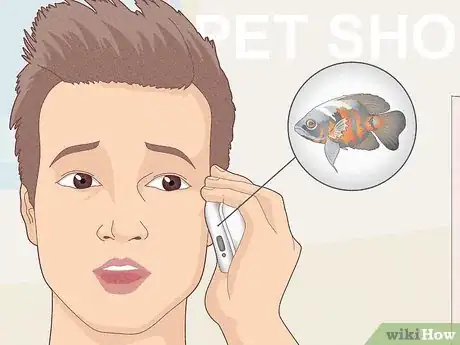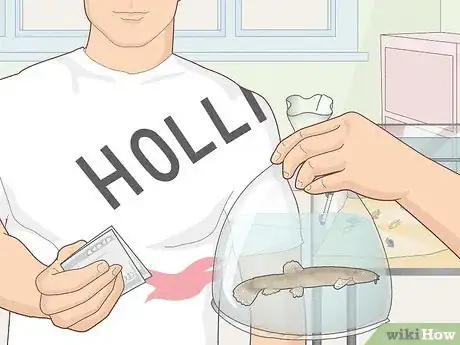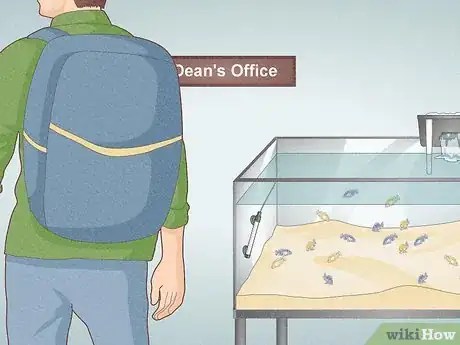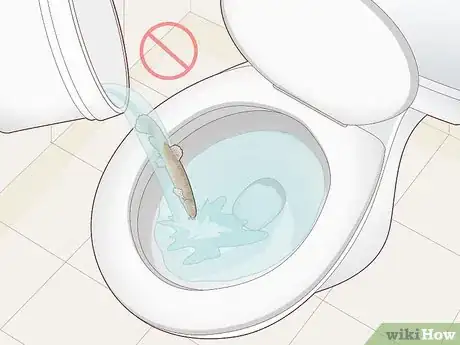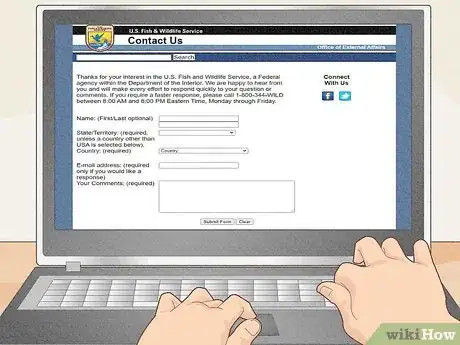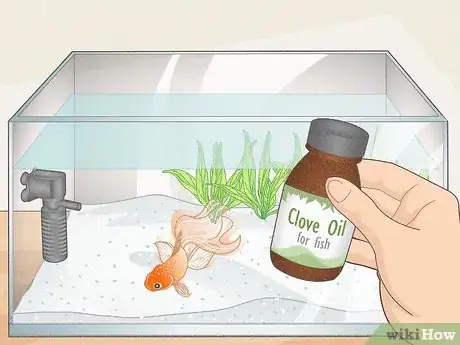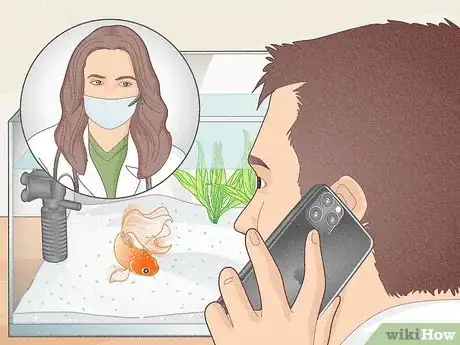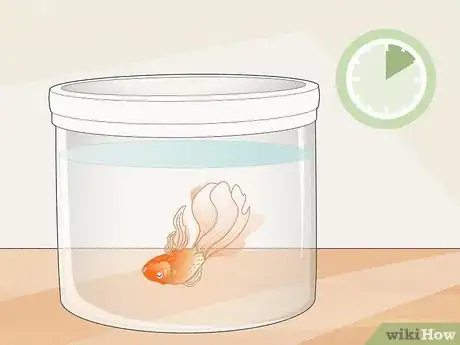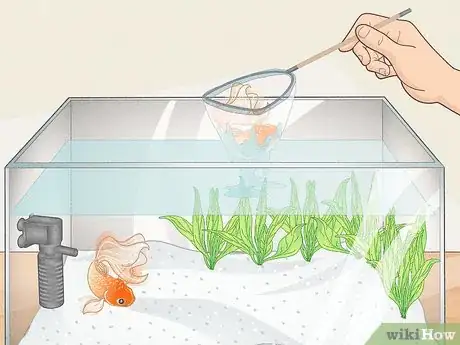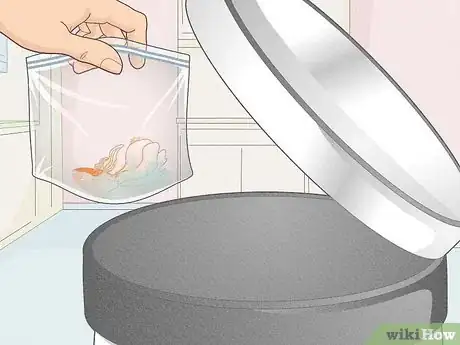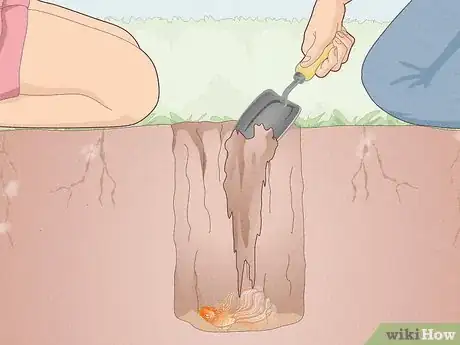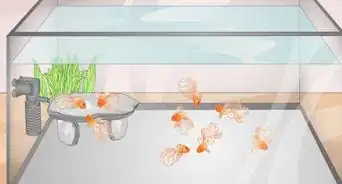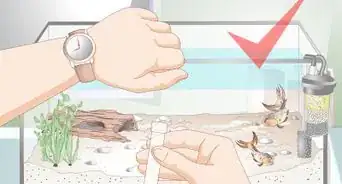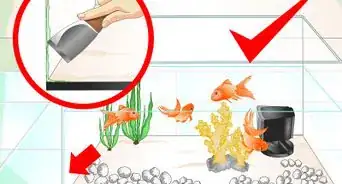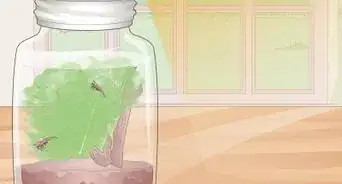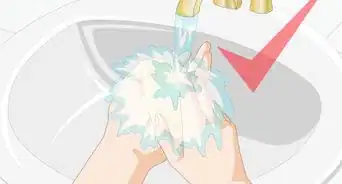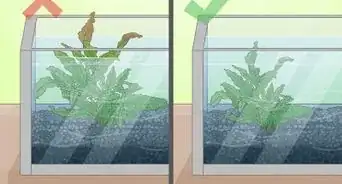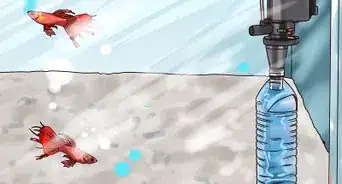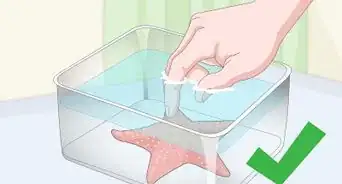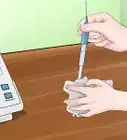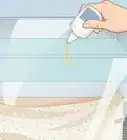This article was co-authored by Marshall Stephens. Marshall Stephens is an Aquarium Expert at Private Oceans Aquariums in West Palm Beach, Florida. Marshall has over 20 years of experience in the aquarium industry and focuses on captive-bred animals. They specialize in tropical and marine aquariums and are a contributor to the Loggerhead Marine life center in Jupiter Florida.
There are 8 references cited in this article, which can be found at the bottom of the page.
This article has been viewed 22,062 times.
Sometimes life throws us curve balls that mean we can no longer care for certain pets, or we just decide to move on from a particular hobby like aquarium keeping. For example, if you can’t take your aquarium with you on a move, you want to replace certain fish, or you can’t afford the hobby anymore, you’ll want to find a way to get the fish off your hands kindly. Your number one option should always be to find them a new home where they can live out the rest of their lives swimming happily around. As a last resort, there are several methods of humane euthanization you can choose to end their lives peacefully. Whether you euthanize a fish or one of your fish passes away because of natural causes, make sure to dispose of the body in a sanitary, caring manner.
Steps
Finding Your Fish a New Home
-
1Ask a local pet shop if you can donate, sell, or trade unwanted fish to them. Call or visit pet shops that sell fish in your area and explain to them that you have certain fish you are trying to get rid of. Ask if they would be willing to buy any of them from you, trade you other fish if you’re still keeping an aquarium, or simply take them off your hands for free to resell them.[1]
- If you bought your fish from a particular local store, start by contacting that store first. They might be more likely to take the fish back from you than a random pet shop.
- Certain types of exotic fish, like lionfish, will probably be easier to sell than something common like a goldfish.
-
2Give or sell your aquarium fish to another aquarium hobbyist. Talk to any family or friends that you have who also own aquariums and ask if they would be interested in buying or adopting your unwanted fish. Post on local social media communities, aquarium hobbyist forums, or classifieds and advertise that you have fish you’d like to sell or give away.[2]
- For example, there might be a Facebook page for local aquarium enthusiasts that you could check out.
- If you’re still keeping an aquarium, but just want to get rid of certain fish, you can ask people if they’re willing to trade fish or maybe some aquarium accessories, so you get something out of the deal too!
- You could also check groups or forums dedicated to the adoption of unwanted pets in general.
Advertisement -
3Donate your whole aquarium or just certain fish to a school or business. Think of local businesses like doctors’ or dentists’ offices or educational institutions that either have an aquarium in the waiting area already or might want one to add to the ambiance. Call them up or drop by and ask if you could donate your aquarium or its fish to them.[3]
- For instance, you might know that your local dentist has a saltwater aquarium in the waiting area. If you have saltwater fish you want to get rid of, ask your dentist if they have any room for them in their aquarium.
- Other types of businesses you could try inquiring with about donating your fish include zoos, nursing homes, aquariums, and museums.
-
4Avoid dumping fish into bodies of water or flushing them down your toilet. Aquarium fish have the potential to become invasive species and damage local ecosystems if you dispose of them this way. Never dump your aquarium out into rivers, lakes, the ocean, down the toilet, or into storm drains.[4]
- This applies for both freshwater and saltwater aquariums.
- Invasive species can kill off local, native fish populations because they are predators or can introduce foreign diseases.
- Flushing a fish down your toilet can also amount to an inhumane method of killing them.
-
5Contact a local environmental organization for help if needed. The U.S. Fish and Wildlife Service or Habitattitude U.S. are examples of such organizations in the United States. Visit the website for one of these organizations, go to the contact information page, and explain your situation via an accepted form of communication. Ask if they have any suggestions for disposing of your fish locally.[5]
- For example, these types of organizations might be able to point you in the direction of a nearby aquarium or fish enthusiast group that you hadn’t heard of that could take your fish off your hands.
- There is also a Habitattitude branch in Canada that you can reach out to if you happen to live in Canada.
- You can also try reaching out to local environmental organizations via social media.
Euthanizing Fish Humanely
-
1Choose to euthanize your fish humanely if you can’t find them a new home. It may seem cruel at first, but a humane euthanasia is much better than releasing your pet fish into the wild where they could die a slower, more unpleasant death. Decide to humanely put your fish down when you can’t care for them any longer and you aren’t able to put them in a new home where they will be cared for.[6]
- For example, you might feel like your goldfish would be happier swimming around in a local pond until the end of his days, but it could easily get snapped up as a snack for a larger fish. Or, your fish could become invasive and hurt the local fish population and ecosystem, which wouldn’t be good either.
- Putting your fish down humanely will give you a chance to say goodbye and reflect on the time you’ve had together. You can be confident that your fish will go to sleep painlessly and won’t suffer as they pass on to wherever fish go when they die.
-
2Contact a local veterinarian or pet shop and ask if they offer fish euthanization. Call a local veterinarian or fish shop that sells fish and inquire about euthanization, then set up an appointment to take your fish in if they offer the service. The vet or pet store employee will administer a soluble overdose of anesthetic that will put your fish peacefully and permanently to sleep.[7]
- If there are any local fishery biologist or marine biologist institutions, this could be another option for euthanization.
-
3Use clove oil to humanely euthanize your aquarium fish yourself. Purchase clove oil from a pharmacy or online. Put the fish you would like to humanely euthanize in a container of at least 1 L (0.26 gal) of water from their aquarium. Mix 4 mg of clove oil per 1 L (0.26 gal) of water in a separate small container of warm water, then pour it into the container with your fish and wait up to half an hour for your fish to stop moving.[8]
- Clove oil is a natural sedative which will painlessly put your fish down at high doses.
- If your fish are still moving after 30 minutes, add more of the clove oil to increase the dosage. Don’t worry—just because the first dose didn’t work, it doesn’t mean your fish are suffering. They just might need a bit more sedative to lose consciousness and stop breathing peacefully.
- This is the only at-home euthanasia method that is widely agreed upon to be humane.
-
4Verify that your fish are dead by timing 10 minutes from the last gill movement. Watch as your fish peacefully stop breathing if you euthanize them yourself and look at the clock or start a 10 minute timer after there are no more gill movements. After 10 minutes has passed with no gill movements, you can be sure that your fish are no longer in this world.[9]
- This applies if you use the clove oil euthanasia technique or if you choose to watch your fish pass on at a vet’s office or pet store.
Getting Rid of Deceased Fish
-
1Remove a deceased fish from your aquarium immediately. Check on your aquarium fish every day when you feed them to make sure they are all healthy and alive. Use a net to scoop the body of any fish that has passed away out of the aquarium right away to dispose of properly.[10]
- The death of an aquarium fish can be sad. When it happens, it's important that you don't leave the deceased fish in your aquarium or else it could pollute the water and expose your other pet fish to bacteria and disease. That’s why it’s so important to remove the body as soon as you notice it, to protect the health of your other fish and help ensure they live long and happy lives.
- Make sure to wash your hands thoroughly to remove any bacteria after handling your deceased fish.
-
2Seal the body in a plastic bag and dispose of it in a trash bin for an easy option. Place your deceased fish into a sealable plastic bag, such as a zip-top plastic bag, and close it securely. Put the bag into a regular household waste bin to be collected by your waste disposal service.[11]
- If there is a bad smell coming from the bag after you seal it up, place it inside another one and seal that up as well to help reduce the unpleasant odors.
- If you had your fish euthanized at a vet’s office or pet shop, they will most likely be able to dispose of the body properly for you.
-
3Bury your deceased fish if you want to give the fish a more ceremonial sendoff. Pick a spot in your yard, garden, or even a flower pot and dig a hole up to 2 ft (0.61 m) deep or as deep as you can. Hold a funeral for your fish if you want to say goodbye and reflect on the life you lived together, then place the body gently into the hole and fill it in with dirt.
- The deeper the hole, the better, because neighborhood critters might smell the body and try to dig it up if the hole is too shallow.
- If you can’t dig a deep hole, you can place a heavy rock over top of the grave to discourage scavengers. You could even decorate the rock to act as a memorial stone for your fish that has passed on.[12]
- If you choose burial but you don’t have a backyard or garden, you could bury it somewhere out in nature like by a river or pond. Just make sure that it’s not on private property.
- You can even build a small casket out of eco-friendly, biodegradable cardboard or wood if you want to give your fish a big sendoff and bury it that way.
Warnings
- Never dispose of unwanted aquarium fish by flushing them down the toilet. This is inhumane and can also potentially introduce invasive species to natural bodies of water if the sewage system leads there. This also applies to disposing of deceased fish.[14]⧼thumbs_response⧽
Expert Interview
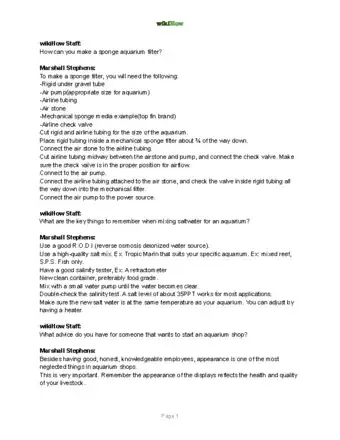
Thanks for reading our article! If you'd like to learn more about aquariums, check out our in-depth interview with Marshall Stephens.
References
- ↑ https://www.state.nj.us/dep/fgw/dsposfsh.htm
- ↑ https://www.fws.gov/midwest/news/Goldfish.html
- ↑ https://www.texasinvasives.org/neverdumpyourtank/
- ↑ https://www.texasinvasives.org/neverdumpyourtank/
- ↑ https://www.fws.gov/midwest/news/Goldfish.html
- ↑ https://www.texasinvasives.org/neverdumpyourtank/
- ↑ https://www.fws.gov/midwest/news/Goldfish.html
- ↑ https://kb.rspca.org.au/knowledge-base/what-is-the-most-humane-way-to-euthanase-aquarium-fish/
- ↑ https://fishlab.com/humanely-euthanize-fish/
- ↑ https://www.practicalfishkeeping.co.uk/features/what-to-do-if-you-find-a-dead-fish-in-your-tank/
- ↑ https://www.agriculture.gov.au/pests-diseases-weeds/aquatic/disease_watch_aquatic_animal_health_awareness/other_aquatic_biosecurity_materials
- ↑ https://www.usurnsonline.com/burial/how-to-bury-a-fish-your-guide-to-a-kid-friendly-fish-funeral-proper-disposal/
- ↑ https://fishlab.com/humanely-euthanize-fish/
- ↑ https://www.texasinvasives.org/neverdumpyourtank/
